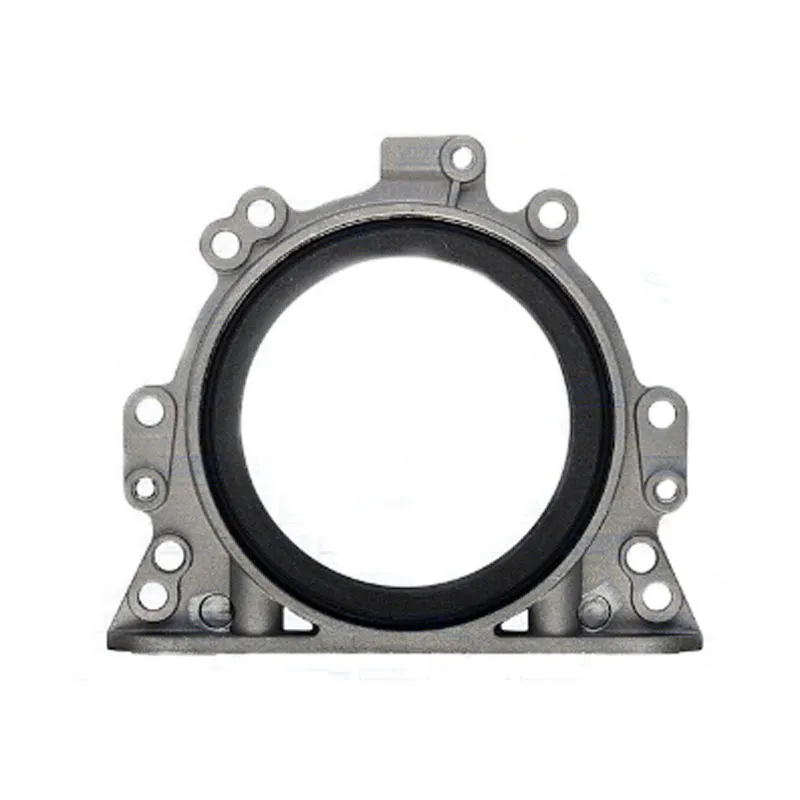Understanding Automotive Oil Seals and Their Importance in Vehicle Maintenance
Understanding Automotive Oil Seals Essential Components for Vehicle Performance
Automotive oil seals are critical components in any vehicle's engine and transmission systems. These seals play a pivotal role in ensuring that oil remains contained within the engine while preventing contaminants from entering. Their effectiveness directly impacts the longevity and efficiency of the vehicle, making it vital for vehicle owners and mechanics to understand their function and maintenance.
What Are Oil Seals?
Oil seals, also known as grease seals or oil rings, are mechanical seals designed to keep lubricants in and contaminants out. They are typically made of rubber or synthetic materials and come in various shapes and sizes to fit different applications within a vehicle. Their primary purpose is to prevent oil leaks, ensuring that the lubricating oil remains in the engine or transmission, where it is needed for smooth operation.
Functionality of Oil Seals
The function of automotive oil seals can be broken down into three main roles
1. Containment of Fluid Oil seals help contain the lubricating oil within the engine, preventing it from leaking out. This is crucial because a lack of oil can lead to increased friction and wear on engine components, ultimately resulting in serious engine damage.
2. Contamination Prevention They also serve as barriers to keep dirt, dust, and other contaminants from entering the engine or transmission. Contaminated oil can cause severe damage over time, leading to costly repairs.
3. Pressure Regulation Oil seals maintain proper pressure within various components of the vehicle. By ensuring an effective seal, they help the vehicle maintain optimal performance levels under various operating conditions.
Types of Oil Seals
There are several types of oil seals, each designed for specific applications and environments. Some common types include
automotive oil seal

- Radial Oil Seals Used mainly in rotating shafts, these seals are designed to seal against the shaft's movement and are commonly found in engines and transmissions.
- V-Seals These seals are often used in applications where there are axial loads. They are shaped like a V and can prevent dirt and water from entering the component.
- Spherical Oil Seals Designed for applications with considerable movement, these seals provide a flexible sealing surface, adapting to the motions of the components.
Importance of Regular Maintenance
Even though oil seals are designed to last, they can wear out over time due to exposure to heat, oil, and environmental conditions. Regular maintenance and inspections are essential to ensure that oil seals are functioning correctly. Common signs of a failing oil seal include
- Oil leaks underneath the vehicle - A noticeable drop in oil levels - Unusual noises from the engine or transmission
If any of these signs are observed, it’s crucial to address the issue as soon as possible, as failure to do so can result in larger mechanical problems.
Replacement of Oil Seals
Replacing oil seals can be a straightforward task for experienced mechanics, but it requires precision and care. When replacing an oil seal, it is essential to ensure that the new seal is the correct type and size for the specific application. Additionally, the sealing surfaces should be cleaned thoroughly to avoid any contamination that could lead to premature seal failure.
Conclusion
In summary, automotive oil seals are small yet vital components that significantly contribute to the overall performance and reliability of a vehicle. Understanding their functionality, types, and the importance of regular maintenance can help vehicle owners ensure their engines and transmissions operate smoothly. By keeping an eye on the condition of oil seals and addressing any issues promptly, one can extend the life of their vehicle and avoid costly repairs. Ultimately, investing in quality oil seals and maintaining them well is essential for any vehicle owner looking to ensure their vehicle’s longevity and performance.
-
Understanding the Front Main Engine Seal: Purpose, Maintenance, and Installation
News Jul.29,2025
-
Understanding O-Rings and Seal Rings: Types, Applications, and Custom Solutions
News Jul.29,2025
-
Understanding Crankshaft Oil Seals: Rear Seals, Pulley Seals, and Their Role in Engine Integrity
News Jul.29,2025
-
The Importance of Front and Rear Crankshaft Seals in Engine Performance and Oil Management
News Jul.29,2025
-
Crank Oil Seals: Functions, Types, and Cost Considerations in Engine Maintenance
News Jul.29,2025
-
A Comprehensive Guide to O-Rings and Seals: Types, Materials, and Global Applications
News Jul.29,2025
-
Mastering Diesel and Performance Engine Maintenance: A Guide to Critical Oil Gaskets
News Jul.28,2025
Products categories















